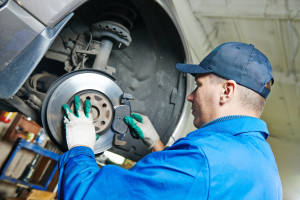More often than not, when I say that I represent people who suffer from asbestos-related cancer, the response that I get is: How can people still be getting cancer from asbestos? Hasn’t asbestos been outlawed for decades now?
There are two reasons why about 3,000 people in the United States are diagnosed with mesothelioma, or asbestos-caused cancer, each year. The primary reason is that it typically takes between 20 and 50 years from the time a person is first exposed to asbestos until that person is diagnosed with cancer.
 The other reason may surprise you: Although the U.S. Environmental Protection Agency and the Consumer Product Safety Commission began banning certain asbestos-containing products in 1973, asbestos in many industrial and consumer products has never been completely prohibited in the United States. Click here to see a list of asbestos-containing products not banned.
The other reason may surprise you: Although the U.S. Environmental Protection Agency and the Consumer Product Safety Commission began banning certain asbestos-containing products in 1973, asbestos in many industrial and consumer products has never been completely prohibited in the United States. Click here to see a list of asbestos-containing products not banned.
For example, asbestos is still used in the manufacture of automatic transmission components, clutch facings, disk brake pads, drum brakes linings, brake blocks, and automotive gaskets. While most auto manufactures have not used asbestos in brakes for some time now, a percentage of the brake products sold as replacement parts in the aftermarket still contain asbestos. Routine vehicle maintenance can expose even “shade tree” mechanics to asbestos in amounts that can cause mesothelioma, if proper precautions are not taken to avoid inhaling dust during such work.
In 2010, with the intent to reduce the release of harmful substances into groundwater and other parts of the environment, Washington and California became the first states in the nation to enact laws that phase out the use of asbestos and other toxic materials in automotive friction products.
Under the Washington’s Better Brakes Law and California’s Motor Vehicle Brake Friction Materials Law, Cal Health & Safety Code Section 25250.60(c), manufacturers may not sell motor vehicle brake friction materials that contain more than the following trace amounts of the following materials:
- Cadmium exceeding 0.01% by weight
- Chromium (VI) salts exceeding 0.1% by weight
- Lead exceeding 0.1% by weight
- Mercury exceeding 0.1% by weight
- Asbestos exceeding 0.1% by weight
They must also certify and mark their products as meeting these restrictions. Companies found to be in violation will be fined $10,000 per violation. A violation also would be a crime under existing hazardous waste control laws.
These requirements became enforceable in California on January 1, 2014, and in Washington on January 1, 2015. California has not yet adopted regulations clarifying the accepted method for testing the products, the certification process, nor the contents of the mark, but California’s Department of Toxic Substances Control has been engaged in the process since early last year and hopes to issue formal regulations later this year. Meanwhile, manufacturers must comply with Washington’s regulations, and DTSC intends to model California’s standards after Washington’s to make compliance easier for industry.
What Asbestos Brake Laws Mean for You
The good news for consumers is that the impact of these laws has already spread beyond the borders of these two west coast states. At the Automotive Aftermarket Products Expo in November, the auto industry announced that it would be entering into an agreement with the U.S. Environmental Protection Agency (EPA) and the Environmental Council of the States (ECOS) to adhere to standards nationwide that are modeled on those established in the Washington and California laws. (Presumably, this agreement will not contain a $10,000-per-violation penalty.)
Copper is highly toxic to fish and has been found to cause gastrointestinal and liver problems for humans. So it’s great that strides are being made to reduce the amount of this heavy metal in the environment.
But for my clients and me, there is a certain irony in the fact that industry is calling the nationwide measure the “Copper-Free Brake Initiative.” This title does nothing to educate the public that as long as asbestos-containing products are still in use, asbestos continues to pose a threat to national health.




